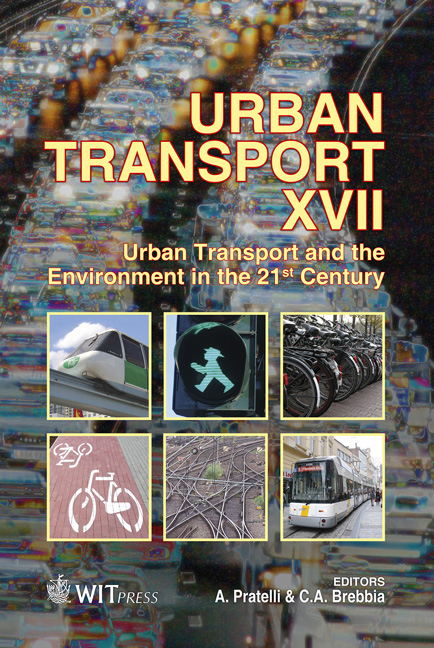Dynamic Vehicle Routing In Road Evacuation: A Model For Route Design
Price
Free (open access)
Transaction
Volume
116
Pages
12
Page Range
627 - 638
Published
2011
Size
3,371 kb
Paper DOI
10.2495/UT110531
Copyright
WIT Press
Author(s)
A. Polimeni & A. Vitetta
Abstract
In this paper the shortest path and route problem in time-dependent networks are treated. The system can be in ordinary or emergency conditions. Path design formulation is based on dynamic programming and its solution is found through a modification of Dijkstra’s algorithm. Route design, starting from the designed paths, is formulated as an optimum problem. In emergency conditions the main objective is to optimize emergency vehicle tour to reduce the intervention time or maximize the number of people rescued in a fixed time. Keywords: time-dependent networks, path design, emergency conditions. 1 Introduction Models and procedures to find shortest paths in a road network in real time are essential to provide information to system users. In this paper we propose models and procedures for path design, and accordingly for vehicle route design, for a fleet of emergency vehicles that operate to support the population involved in a disaster. When a disaster occurs, the road network changes from ordinary conditions to emergency conditions (i.e. due to the closure of some links, to the change in link costs, and so on). For a road network under emergency conditions, models and procedures used for networks under ordinary conditions cannot be directly applied [1]. In emergency conditions many of the models and procedures used in ordinary conditions need to be redefined. The modifications to be considered concern demand [2–6], supply and demand-supply interaction [7, 8], path design for emergency vehicles [9, 10] and the general guidelines for planning [11–15].
Keywords
time-dependent networks, path design, emergency conditions





